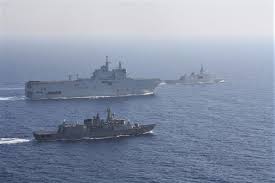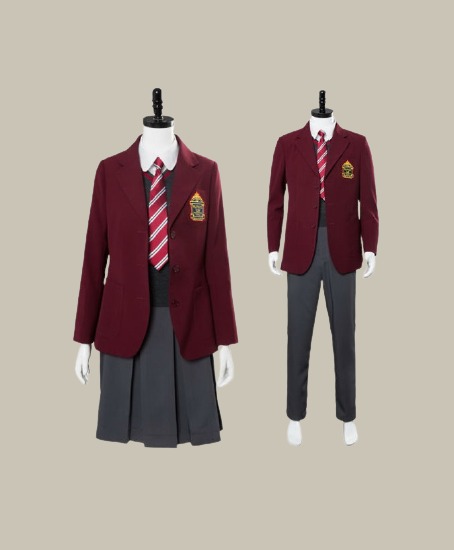Stamp: 2e Régiment De Fusiliers Marins (Cinderellas 1914)
2e Régiment De Fusiliers Marins (Cinderellas 1914)
01 January (Cinderellas ) within release France : First World War Delandre Vignettes goes into circulation Stamp 2e Régiment De Fusiliers Marins face value None No Face Value
| Stamp 2e Régiment De Fusiliers Marins in catalogues | |
|---|---|
| Colnect codes: | Col: FR-DEL 1914-49 |
Stamp is square format.
French Marine SeriesAlso in the issue France : First World War Delandre Vignettes:
- Stamp - 130° Rt Territorial. Infantry Regiment face value None;
- Stamp - 16eme de Train. Mounted Regiment face value None;
- Stamp - 347 Infantry Regiment face value None;
- Stamp - 44 Territorial. Infantry Regiment face value None;
- Stamp - 50° Rt de Ligne. Infantry Regiment face value None;
- Stamp - 73° Rt de Ligne. Infantry Regiment face value None;
- Stamp - 94° Rt de Ligne. Infantry Regiment face value None;
- Stamp - 219 de ligne Infantry Regiment face value None;
- Stamp - Pro Patria face value None;
- Stamp - Punch and Judy. Exposition 1914 Lyon face value None;
- Stamp - 12th Territorial Infantry Regiment face value None;
- Stamp - 12th Territorial Infantry Regiment face value None;
- Stamp - 1ère Escadrille De Sous Marins De La Première Armée Navale face value None;
- Stamp - 1st Chasseurs face value None;
- Stamp - 1st Tonkin Riflemen Regiment face value None;
- Stamp - 2e Escadrille De Sous Marins De La Première Armée Navale face value None;
- Stamp - 2e Régiment De Fusiliers Marins face value None;
- Stamp - 4th Engineers Regiment face value None;
- Stamp - 64th Infantry Regiment face value None;
- Stamp - Amiral Charner face value None;
- Stamp - Aventurier face value None;
- Stamp - Bearn face value None;
- Stamp - Bretagne face value None;
- Stamp - Bruix face value None;
- Stamp - Cassini face value None;
- Stamp - Charlemagne face value None;
- Stamp - Compagnies de débarquement face value None;
- Stamp - Conde face value None;
- Stamp - Condorcet face value None;
- Stamp - Courbet face value None;
- Stamp - Cuirasse Lorraine face value None;
- Stamp - Danton face value None;
- Stamp - Democratie face value None;
- Stamp - Desaix face value None;
- Stamp - Diderot face value None;
- Stamp - Du Chayla Croisier de 2e Classe face value None;
- Stamp - Dunkerque Hydroaeroplanes face value None;
- Stamp - Dupleix face value None;
- Stamp - Ecole des Fusiliers marins face value None;
- Stamp - Edgar Quinet face value None;
- Stamp - Ernest Renan face value None;
- Stamp - Escadrilles de sous marins de Cherbourg et de la Manche face value None;
- Stamp - French Red Cross face value 2;
- Stamp - French Red Cross face value 5;
- Stamp - French Red Cross. Assoc French Ladies. Langres Commitee face value None;
- Stamp - French! Made in Germany. Do not buy face value None;
- Stamp - French! Remember Do not buy german goods face value None;
- Stamp - Gloire face value None;
- Stamp - Henri IV face value None;
- Stamp - HMS Centurion face value None;
- Stamp - HMS Colossus face value None;
- Stamp - HMS Dominion face value None;
- Stamp - HMS Gloucester face value None;
- Stamp - HMS King Alfred face value None;
- Stamp - HMS Neptune face value None;
- Stamp - HMS Nubian face value None;
- Stamp - HMS Queen Mary face value None;
- Stamp - Honour Country Central Material Aerostation face value None;
- Stamp - Honour Country Central Material Aerostation. Overprint face value None;
- Stamp - Jauré Guiberry face value None;
- Stamp - Join French Propaganda to help French Industry face value None;
- Stamp - Jules Michelet face value None;
- Stamp - Kleber face value None;
- Stamp - La Motte Piquet face value None;
- Stamp - Laboratory Bacteriology face value None;
- Stamp - Languedoc face value None;
- Stamp - Latouche Tréville face value None;
- Stamp - Le Duquesne face value None;
- Stamp - Le Mirabeau face value None;
- Stamp - League Protection Antii-Germanic Cote d'Azur Nice. Get Rid face value None;
- Stamp - Leon Gambetta. There is only one France face value None;
- Stamp - Marine Blockade Signal of Distress face value None;
- Stamp - Marseillaise. Aux Armes Citoyens face value None;
- Stamp - Mortier face value None;
- Stamp - Noel. Que fait-il? Christmas. How is he? face value None;
- Stamp - Notre 75 Artillery Regiment face value None;
- Stamp - Paris face value None;
- Stamp - Patrie face value None;
- Stamp - Pothual face value None;
- Stamp - Pro Patria Without Fail Unto Victory face value None;
- Stamp - Remember Scarborough face value None;
- Stamp - Republique face value None;
- Stamp - Saint Louis face value None;
- Stamp - Superdreadnought Lyon face value None;
- Stamp - Superdreadnought Marseille face value None;
- Stamp - Superdreadnought Tourville face value None;
- Stamp - Take up the sword of Justice. Remember face value None;
- Stamp - Torpilleurs Escadre face value None;
- Stamp - Voltaire Honneur Patrie face value None;
- Stamp - Waldeck Rousseau Croiseur Cuirassé face value None;
|
Data entry completed
50%
|
|
|---|---|
| Stamp 2e Régiment De Fusiliers Marins in digits | |
| Country: | Cinderellas |
| Date: | 1914-01-01 |
| Emission: | Cinderella |
| Format: | Stamp |
| Face Value: | None No Face Value |
Stamp 2e Régiment De Fusiliers Marins it reflects the thematic directions:
World War I or the First World War (28 July 1914 – 11 November 1918), also known as the Great War, was a global conflict between two coalitions: the Allies (or Entente) and the Central Powers. Main areas of conflict included Europe and the Middle East, as well as parts of Africa and the Asia-Pacific. There were important developments in weaponry including tanks, aircraft, artillery, machine guns, and chemical weapons. One of the deadliest conflicts in history, it resulted in an estimated 30 million military casualties, plus another 8 million civilian deaths from war-related causes and genocide. The movement of large numbers of people was a major factor in the deadly Spanish flu pandemic.
A navy, naval force, military maritime fleet, war navy, or maritime force is the branch of a nation's armed forces principally designated for naval and amphibious warfare; namely, lake-borne, riverine, littoral, or ocean-borne combat operations and related functions. It includes anything conducted by surface ships, amphibious ships, submarines, and seaborne aviation, as well as ancillary support, communications, training, and other fields.
A uniform is a variety of costume worn by members of an organization while usually participating in that organization's activity. Modern uniforms are most often worn by armed forces and paramilitary organizations such as police, emergency services, security guards, in some workplaces and schools, and by inmates in prisons. In some countries, some other officials also wear uniforms in their duties; such is the case of the Commissioned Corps of the United States Public Health Service or the French prefects. For some organizations, such as police, it may be illegal for non-members to wear the uniform.


